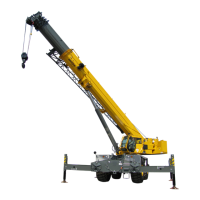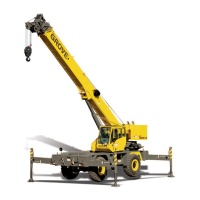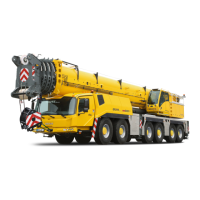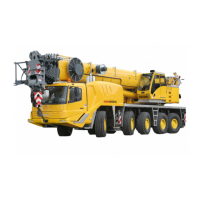Grove Published 04-04-2017, Control # 446-09 3-21
RT770E OPERATOR MANUAL OPERATING CONTROLS AND PROCEDURES
indicator that, when actuated, will override and prevent the
RCL, for a period of 30 minutes, from locking out the three
craning functions (boom down, telescope extend, and hoist
up) should an overload or two-block condition occur.
Overriding the RCL with this switch should only be done in
the case of an emergency or when servicing the boom.
The indicator in the override switch will illuminate red and the
RCL and A2B override indicators on the RCL display will
flash to indicate the switch has been activated. Upon
activation, all craning function movements are reduced to
15% of their normal maximum speeds.
The RCL override function is automatically cancelled after 30
minutes. The RCL override function can also be cancelled by
the operator by either pressing the RCL emergency override
switch a second time, by turning off the engine, or by turning
the crane function power switch off.
Refer to the RCL operator's manual for more information.
RCL Internal Light Bar (Optional) (Not
Shown)
The Rated Capacity Limiter (RCL) Internal Light Bar is
located on the upper left hand corner of the crane cab. The
RCL is an operational aid that warns a crane operator of
approaching overload conditions and over hoist conditions
that could cause damage to equipment and personnel.
Strobe Light or Beacon (Optional) (Not
Shown)
The strobe light or beacon is on the roof of the cab. It is on
when the ignition switch is on.
Backup Alarm (Not Shown)
The backup alarm is an audio system used to warn
personnel outside the crane when the crane is backing up.
The alarm system is electrical and consists of the backup
alarm and its associated wiring. The alarm is connected to
the electrical wiring for the transmission reverse solenoids. It
is activated when the transmission shifter is in the reverse
position. The backup alarm is installed in the rear outrigger
box behind the grill plate.
Emergency Exit
The windshield is considered the Emergency Exit. In an
emergency, push out on the windshield and escape through
the opening.
OPERATING PROCEDURES
Pre-Starting Checks
A complete walk-around visual inspection of the crane
should always be made with special attention to structural
damage, loose equipment, leaks, or other conditions that
would require immediate correction for safety of operation.
The following checklist items are suggested specifically for
the operator’s benefit to make certain his crane is prepared
for starting the day’s work.
Fuel Supply
Check the fuel level and make sure the cap is on tight.
Engine Oil
Check the oil level in the crankcase and fill to the FULL mark
on the dipstick. Do not overfill.
Engine Coolant
Check the coolant level in the radiator surge tank sight
gauge and fill to the proper level. Do not overfill. Check to
make sure the radiator and reservoir caps are secure.
Batteries
Check that the battery cables and clamps are tight and not
corroded.
Signal and Running Lights
Check all signal and running lights for proper operation.
Replace burned out lamps with those of the same number or
equivalent.
Foot and Parking Brakes
Check the foot and parking brakes for proper operation.
Daily Lubrication
Make certain that all components requiring daily lubrication
have been serviced. (Refer to Lubricants and Lubrication
Intervals, page 5-1.)
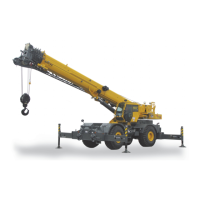
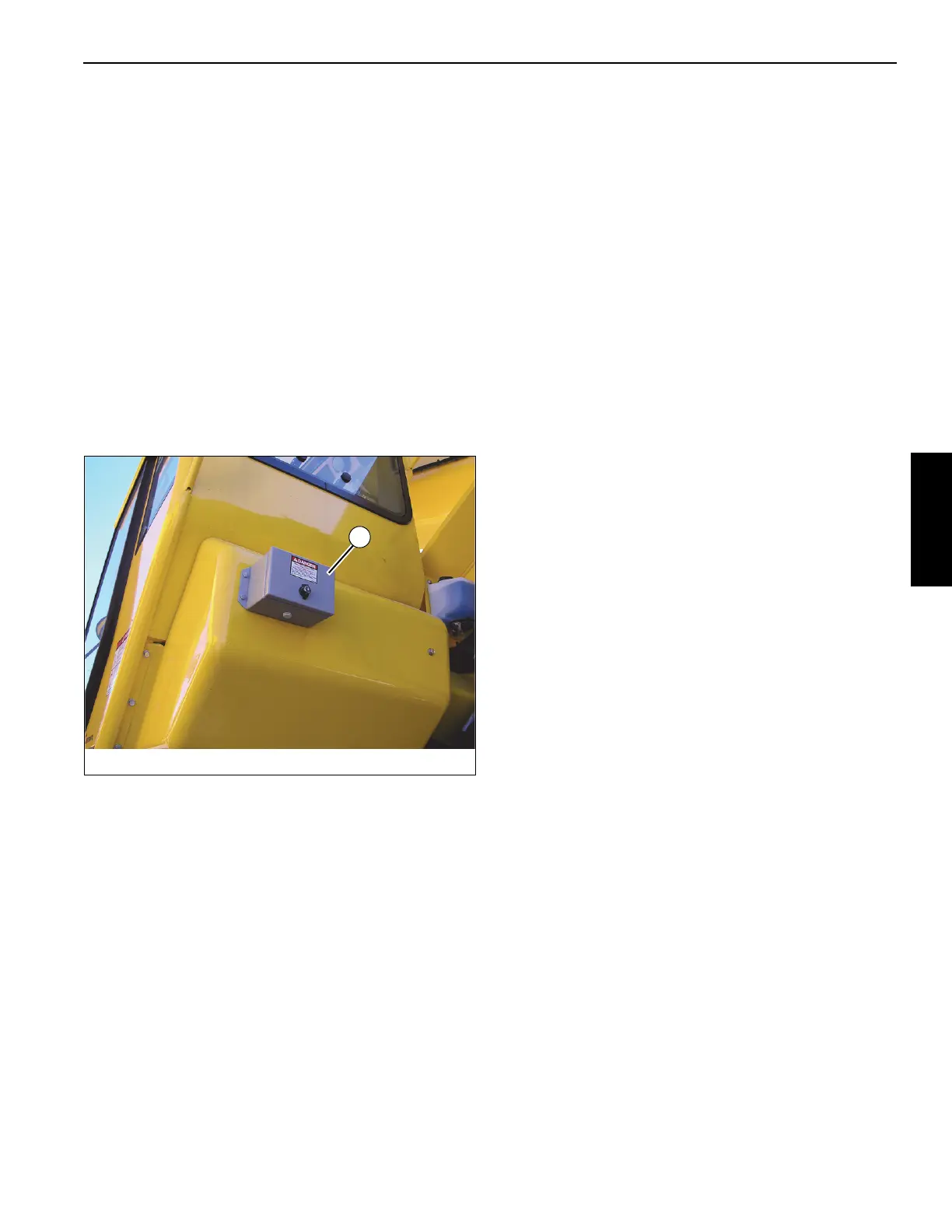